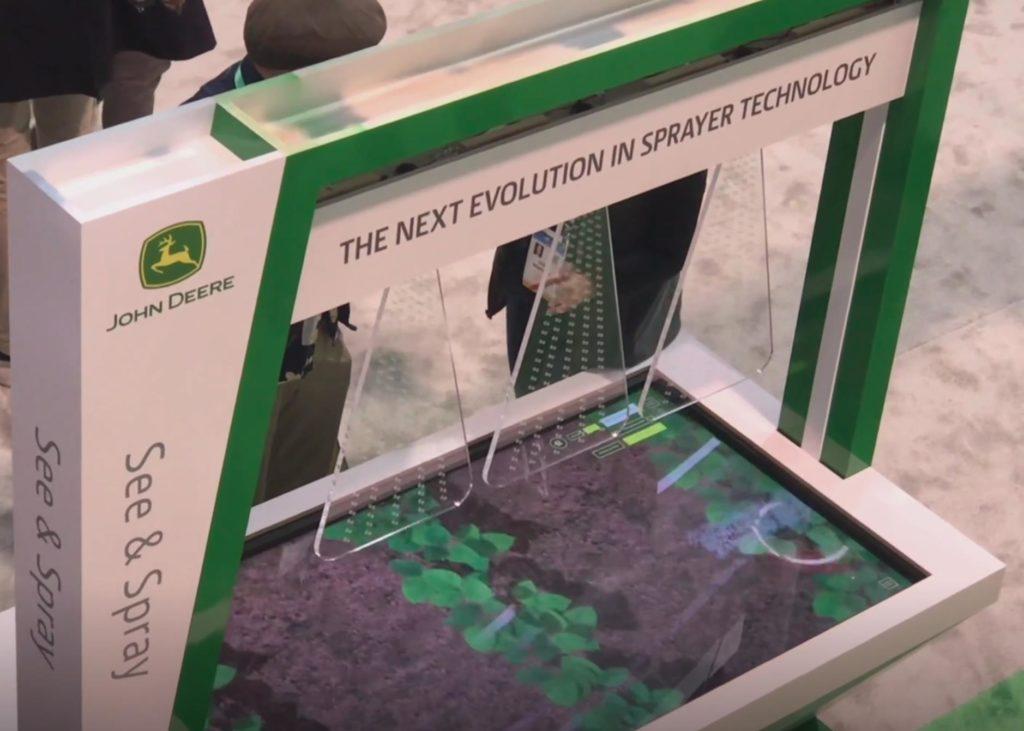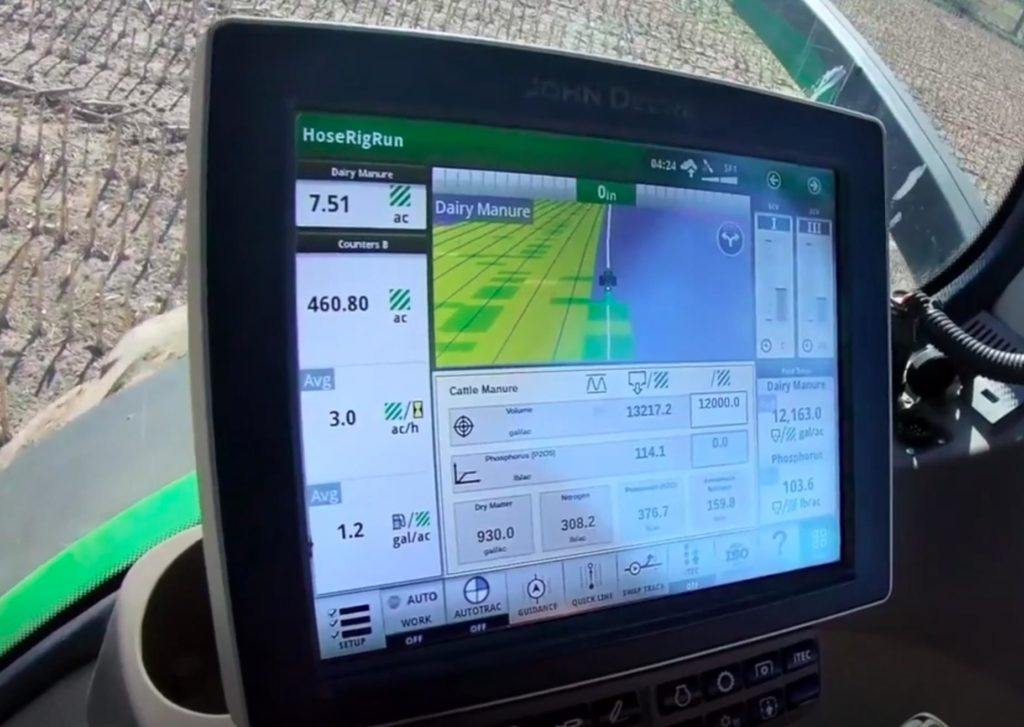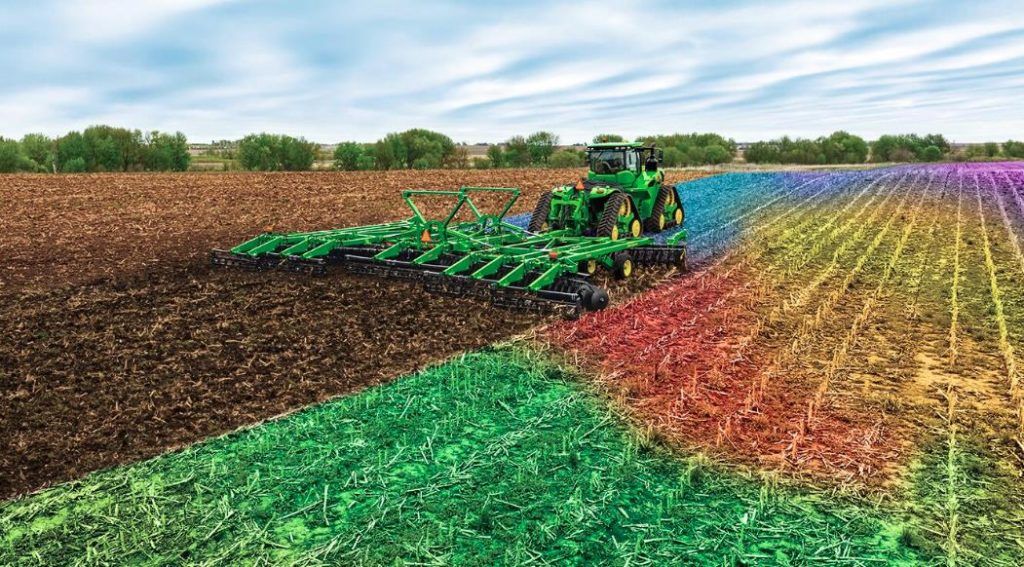John Deere: Planting the Seeds of Technology and Harvesting Profits

John Deere is on the cutting edge of AI, ML, and computer vision applications in agriculture, and well-positioned to reap the benefits of the digital innovations sprouting in Silicon Valley.
In the field of artificial intelligence and machine learning, the technology sector reigns supreme, but advancements in these capabilities are also revolutionizing the ages-old farming and agriculture industry. John Deere is on the cutting edge of AI, ML, and computer vision applications in agriculture, and well-positioned to reap the benefits of the digital innovations sprouting in Silicon Valley.
Big Tractors, Big Farms, and Even Bigger Datasets
Since it was founded over 180 years ago, John Deere has adapted and evolved alongside the many innovations in the agriculture industry. Few shifts have been as dramatic as the introduction of advanced technology in the space. As the race to increase yields, reduce costs, and boost sustainability has become increasingly intense, so, too, has the application of artificial intelligence, machine learning, and computer vision to advance farmers towards these objectives. This has, in turn, largely affected the types of products and development John Deere supports, and changed its business model as well.
Leading the pack of these innovations coming from the Midwestern company is John Deere’s “See and Spray” system. Using technology acquired in its merger with Blue River Technology, this selective spraying tool uses a 90-foot boom equipped with 97 “robots” to identify weeds and only spray herbicides on the undesired plants. Not only does this reduce herbicide use by 80-90%, saving farmers significant operating expenses, but it also boosts crop yields and promotes long-term sustainability. Because herbicides no longer kill the primary crops as collateral damage to weed reduction, total harvests grow – in early tests with cotton plants, yields doubled. When used with pesticides, targeting zones or plants particularly susceptible to insects can similarly decrease spend on pesticides while also reducing the rate at which pests develop tolerance and resistance to chemicals, minimizing the need to use harsher mixtures which pose health and sustainability risks.
John Deere’s Combine Advisory system follows this trend towards technology-enabled design with machine learning-based computer vision. The tool resides in the combine’s “elevator” which transports crops to the tank. From its video feed, the system monitors video images of grains being harvested and analyzes the quality of the grain to optimize operating parameters in real-time. This simultaneously serves the purposes of improving crop yields, enhancing the quality of harvested crops with precisely adjusted cut patterns, and lowers waste as organic detritus is separated and used as fertilizer – again providing for more sustainable farming practices.
New Fields of Opportunity
Within the next 30 years, the world is projected to reach a population of 10 billion. That will inevitably drive demand for crops and, since there is a limit to the amount of land that can be repurposed for farming, productivity gains, scale efficiencies, and cost-cutting mechanisms will become increasingly important to the industry. With high adoption levels for its existing technology-first solutions, this bodes well for John Deere’s future.
To stay at the forefront of rapid technology advancements, John Deere has had to adapt. Recognizing that its size and expertise do not lie with in-house development of artificial intelligence products, the company turned to external sources of innovation – acquiring Blue River Technology in 2017 for $305 million. With an emphasis on preserving the start-up’s culture to limit turnover and maximize value, John Deere was able to integrate the venture’s IP and talent into its existing product development pipeline, and launched the See and Spray technology along with several new products at the CES in 2020.
Another opportunity afforded by the advent of computer vision and artificial intelligence is the “Farm Forward” autonomous farm John Deere has been working on for the last decade. The idea here is the have a fully remotely managed farm run by robotic tractors driving themselves around plots informed by artificial intelligence algorithms optimizing operations on an ongoing basis. Letting the autonomous farm operate independently can leverage 5G, big data processing, geospatial modeling, drone-based aerial photography, robotics, computer vision, and AI/ML capabilities to run experiments and continue improving productivity.
Of course, these opportunities for continued technology penetration and company advancement do not come without challenges. The key obstacle for John Deere is one that plagues most of the agricultural industry: talent retention. With Silicon Valley drawing so much of the artificial intelligence human capital, it is difficult to attract these candidates to the “Silicon Prairie” in the Midwest. To combat this obstacle, in addition to an acquisitive approach, John Deere launched the JD Labs in downtown San Francisco in May 2017 to create a pipeline of research findings from the Bay to the company headquarters. Pitching opportunities as tech positions rather than the more traditional view of John Deere as a 180-year old agriculture equipment manufacturer has also helped in this regard.
Capturing Value and Adjusting for the Seasons Ahead
New products offer the primary stream of revenue for John Deere, but there may be more channels the company is not currently leveraging to capture the value it is currently delivering to customers. A key instance of this is monetizing the data it accumulates through its vast array of IoT-enabled products.
Today, John Deere’s vast IoT deployments on machines gather 5-15 million measurements per second from over 130,000 connected devices around the world. This has led to the company becoming “one of the largest users of cloud computing services” at a global level. Data collection at this magnitude includes a range of sources including maintenance information on tractors, localized weather inputs, aerial imagery from drone systems, and soil analyses.
While John Deere is focused on building trust among its users and has not yet aggregated and packaged its troves of data into solutions for customers, offering insights gained may prove beneficial to all members of its ecosystem. Specialized knowledge of how to maximize productivity under various conditions can guide farmers through external shocks, share best practices across geographies, and identify which seeds perform best for specific goals. These insights could not be derived from a single farm mining its own data. Furthermore, this dataset can even inform GMO development labs as new hybrid crops are designed, diversifying the company’s revenue sources.
Offering a data solution to its customers may also enable John Deere to stabilize cash flows with SaaS and data as a service business models that do not rely on physical production, but instead offer high-margin gains through recurring purchases – capturing a share of the immense value generated by its products.
To continue capitalizing on the opportunities ahead, John Deere will need to prioritize seamless acquisition integration, develop and expand its talent pipeline in the Bay Area through the JD Labs initiative, and consider new approaches to value capture which are foreign to its current operating model. In some respects, this requires a transformation of John Deere into a tech-first enterprise to avoid displacement by the ventures disrupting legacy businesses through applications of AI, ML, and computer vision. Such transitions may be difficult, but, ultimately, they are necessary if the company is to weather the storms ahead, and reap the rewards of the seeds planted today.
References:
https://www.deere.com/en/our-company/john-deere-careers/work-here/isg/
https://www.spatialsource.com.au/gis-data/deere-ai-machine-learning








Very interesting article iBot! You touched on some interesting topics and challenges for John Deere, especially attracting talent and innovation to an older and “less sexy” industry. I wonder if there is also a challenge with educating customers on all of this new technology? Smaller farmers are often less technological savvy than large industrial farmers, and are missing out on significant improvements. Could John Deere increase adoption of their technology by focussing on user needs and helping with easy to use and implement farming control systems?
Great read! I believe the entire food and agribusiness industry will see a rise in the use of frontier technologies in the coming years. With companies like John Deer pushing the limits of what we know today as farming, they will hopefully manage to incentivize a new generation of farmers to join the workforce and help grow our food supplies with cutting edge technology.